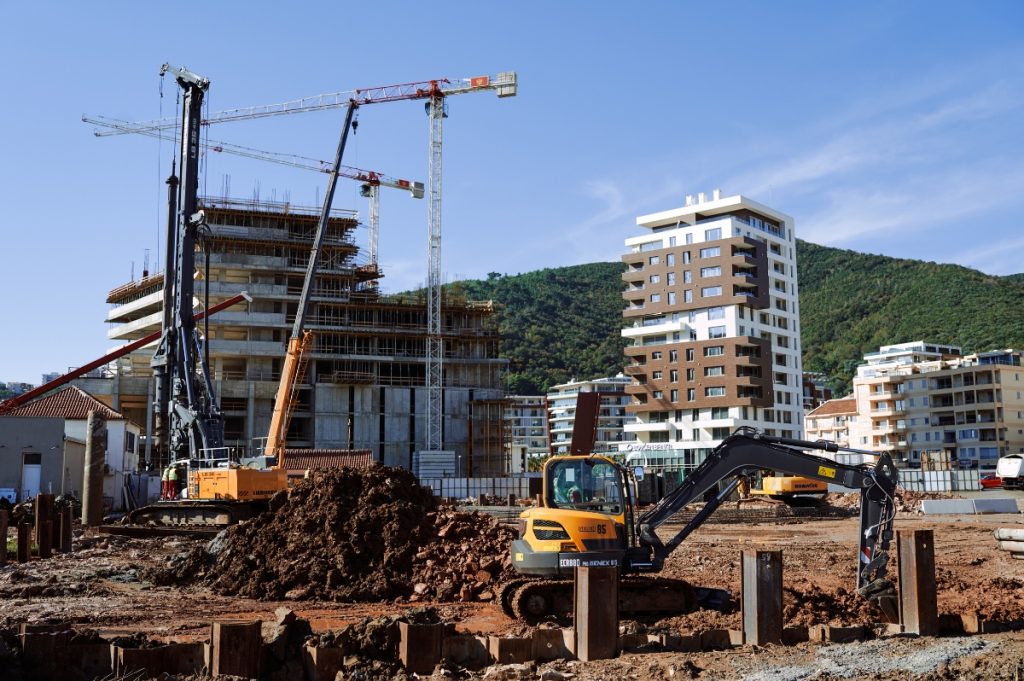
Ground improvement techniques play an important role in the world of civil engineering and construction. These methods are used to enhance the properties of soil, making it more stable and suitable for various infrastructure projects. Soil stabilization is essential when dealing with weak or unpredictable soil conditions that can jeopardize the safety and longevity of structures.
In this article, we will explore versatile ground improvement techniques, with a particular focus on prefabricated vertical drain (PVD) installation.
Soil stabilization is the process of modifying the characteristics of soil to improve its engineering properties. It is a fundamental step in construction projects, especially when dealing with challenging soil conditions. Proper soil stabilization can prevent issues such as settlement, uneven foundations, and structural damage. By enhancing the soil’s strength, durability, and compressibility, it ensures the long-term stability of infrastructure.
There are various techniques for soil stabilization, each designed to address specific challenges and soil types. Let’s learn one of the most effective methods, PVD installation, and its role in ground improvement.
Prefabricated vertical drains, often referred to as wick drains, are widely used in ground improvement projects. They are slender, vertically installed drains that accelerate the consolidation of soft or loose soils. PVDs work by providing pathways for excess pore water to escape, which expedites the settlement process. Here’s how PVD installation works:
Before commencing PVD installation, a thorough geotechnical investigation is conducted to assess the soil conditions and determine the most suitable approach. Engineers use this data to design the PVD layout, taking into account the soil type, structure load, and settlement requirements.
PVDs are installed using specialized equipment that drives the drains vertically into the ground. The drains are typically made of synthetic materials and are designed to withstand the installation process. The depth and spacing of the drains are determined by the site-specific requirements.
Once installed, PVDs create a network of vertical channels within the soil. As excess pore water is forced to escape through these channels, it expedites the consolidation process. This reduces settlement times significantly, making it an efficient technique for stabilizing soft soils.
Prefabricated vertical drain installation offers several advantages, making it a preferred choice for ground improvement projects:
PVD installation accelerates consolidation, reducing settlement times dramatically. This speed is crucial in projects with strict timelines.
PVDs improve the stiffness and load-bearing capacity of the soil. This ensures that structures built on the stabilized soil remain stable and secure.
By reducing the time required for consolidation, PVD installation can lead to significant cost savings in construction projects.
PVDs are made from synthetic materials that do not negatively impact the environment. This makes them an environmentally friendly option for ground improvement.
PVDs are suitable for a wide range of soil types, from soft clays to loose silts. They are a versatile solution for various ground improvement needs.
While PVD installation is a powerful method for soil stabilization, it’s not the only ground improvement technique available. Here are some other notable methods used in civil engineering:
Vibro compaction involves the use of vibrating probes to densify loose soils. The vibrations increase soil density and shear strength, making it suitable for foundations and embankments.
Grouting involves injecting a cement-based slurry into the soil to enhance its strength and reduce permeability. It is effective for sealing leaks in underground structures and stabilizing soil.
Deep soil mixing combines in-situ soil with cementitious materials to create columns of stabilized soil. This technique is particularly useful for strengthening weak or collapsible soils.
Stone columns, also known as granular piles, are created by installing columns of crushed stone or aggregate into the ground. These columns improve the load-bearing capacity of the soil and reduce settlement.
Geosynthetic materials like geogrids and geotextiles are used to reinforce soils. They are often employed in retaining walls, embankments, and slope stabilization projects.
Dynamic compaction involves the use of heavy machinery to compact loose soil layers. The impact of the machinery increases soil density and stability.
The choice of a ground improvement technique depends on various factors, including soil type, project requirements, budget, and environmental considerations. Geotechnical engineers and soil experts play a pivotal role in determining the most suitable method for a specific project. They conduct comprehensive site investigations, analyze soil samples, and consider the project’s objectives to make informed recommendations.
In some cases, a combination of ground improvement techniques may be used to achieve the desired soil stabilization results. For instance, PVD installation might be combined with deep soil mixing to address complex soil conditions effectively.
Soil stabilization is a critical aspect of construction and civil engineering projects. It ensures the safety, durability, and long-term stability of structures built on challenging soil types. Among the various ground improvement techniques available, prefabricated vertical drain (PVD) installation stands out for its speed, efficiency, and versatility.
PVDs create an efficient drainage system within the soil, allowing for rapid consolidation and reducing settlement times. However, it’s essential to select the most suitable ground improvement technique based on the specific soil conditions and project requirements. Geotechnical experts play a vital role in making these decisions, ensuring that construction projects are carried out on stable and secure ground.
As the field of civil engineering continues to evolve, ground improvement techniques like PVD installation will remain integral to successful construction endeavors, offering innovative solutions for challenging soil conditions.
Copyright © Gateway Structure Sdn Bhd (199401025111). All Right Reserved.